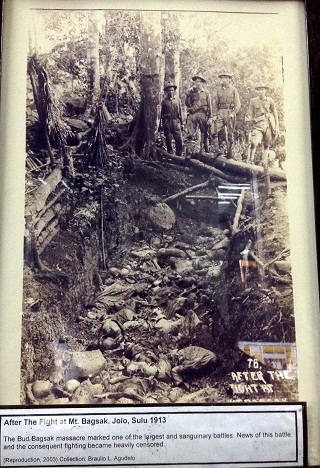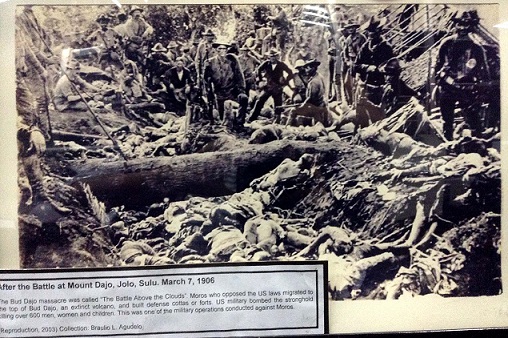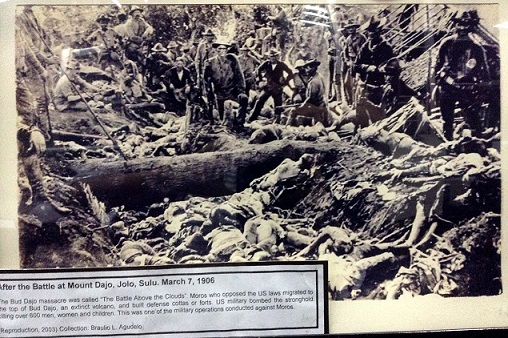By LUZ RIMBAN
(Conclusion)
ADVOCATES for Mindanao like Fr. Eliseo Mercado, OMI, and Fr. Joel Tabora, SJ, constantly refer to history as the point where Filipinos need to go to understand the strife in Mindanao.
“Ang unang dahilan siguro kung bakit may gulo dito sapagkat yung feeling ng ating mga kapatid na Muslim ay mayroon hindi makatarungan na nangyari sa kasaysayan nila (The first reason for the strife here is the feeling of our Muslim brethren that a historical injustice committed them),” said Mercado in an interview late last year.
One historical injustice, Mercado said, is what he calls the “minoritization of the Bangsamoro,” a historical development in which Muslims, once dominant in Mindanao, have been reduced to minority status in their own ancestral land.
“The homesteading policies from the north, which ultimately deprived Muslim and Lumad Mindanaoans of their lands and altered the Mindanao landscape forever,” is one of the historical causes of the violence, Tabora said in his blog, taborasj.
Because Moros continued to fight the American colonizers, the colonial government launched a widespread campaign to get people from Luzon and the Visayas to populate the Moro Province, then composed of Zamboanga, Cotabato, Lanao, Sulu and Davao. In those days, the Moro Province was made up 90 percent of Muslims, said Mohagher Iqbal, chairman of the peace panel of the Moro Islamic Liberation Front.
The campaign lasted all the way to the 1950s and beyond, and came in such forms as Manuel Quezon’s homestead program to Ramon Magsaysay’s “Go South” campaign. The Christian population in Mindanao multiplied, while the Muslim population dwindled.
“I studied in Manila in the mid-1960s and returned in the 1970s,” Iqbal said. “Going to Manila, the boat was practically empty. Coming back to Cotabato, the boat was full of settlers from Luzon and the Visayas. All of the lands here, they occupied.”
As Filipinos from Luzon and the Visayas descended on Mindanao in a frenzy of landgrabbing, Muslims were pushed to the margins and impoverished, except the Muslim elite who had tribal lands titled in their names, said Al-Rashid Cayongcat in his book Bangsa Moro People in Search of Peace.
By the 1950s, violence had erupted and prompted a committee of Congress to look into “the economic disparities between Philippine Muslims and Christians generated by Christian migration to the Muslim South,” wrote Thomas McKenna in Muslims Rulers and Rebels.
 The special committee that investigated the matter recommended creating the Commission on National Integration (CNI), which addressed the poverty and alienation of Muslims through education. Thousands of Muslims youths benefited from the program for years, including Dr. Sukarno Tanggol, chancellor of the Mindanao State University in Iligan City and former Philippine ambassador to Kuwait, himself.
The special committee that investigated the matter recommended creating the Commission on National Integration (CNI), which addressed the poverty and alienation of Muslims through education. Thousands of Muslims youths benefited from the program for years, including Dr. Sukarno Tanggol, chancellor of the Mindanao State University in Iligan City and former Philippine ambassador to Kuwait, himself.
“I was one of the beneficiaries. Admittedly there was a need to let the Moros feel that they are part (of the Filipino nation) and so through education, the CNI offered scholarships to many Muslim youth. That was one way of making them go back to the mainstream politics of our country,” Tanggol said.
Among the earlier CNI scholars was a Tausug youth named Nur Misuari who studied and later taught at the University of the Philippines. He and other CNI scholars, McKenna wrote, experienced anti-Muslim sentiments in faraway Manila.
They were also in the capital when then senator Benigno Aquino Jr. exposed the Jabidah massacre, the killing on Corregidor Island in 1968 of some 70 recruits mostly from Simunul town, which was then part of Sulu.
The recruits were being trained for a clandestine operation they were not told was the invasion of Sabah. When they learned of their mission, they refused to take part in attacking their fellow Muslims. As they were about to leave Corregidor, they were gunned down, said Jibin Arula, the lone survivor of the massacre, in a speech at the 2008 commemoration of the massacre.
“The Jabidah massacre was an eye opener,” Iqbal said, prompting Muslims to believe that their lives and property were not safe in the Philippines. Not long after this, Misuari formed the Moro National Liberation Front.
“I think there was this sense that the national government was into some genocide,” Tanggol said. “I was a kid then. But I think in hindsight there was none. Only that people did not quite understand the forces that were present within Mindanao.”
Still, the years that followed the formation of the MNLF would be what Muslim scholars like Tanggol call the most violent episodes of the conflict in Mindanao.
“At that time, there were so many Muslims being massacred,” Iqbal said, pointing to the Ilaga movement of Christian vigilantes organized by the Philippine Constabulary and local leaders that was believed responsible for the massacre of Muslims, particularly in Cotabato.
By then, Ferdinand Marcos had declared martial law, one of his justifications being the war in Mindanao. Soldiers rounded up and killed Muslims and hundreds of thousands were displaced.
“I was born in Esperanza, Sultan Kudarat. Our home was razed to the ground. I saw jetfighters drop bombs on our village,” said Abdulbasit Bobby Benito, executive director of the Mindanao Human Rights Action Center, of his family’s experience in the early 1970s. “There were no evacuation centers at that time. We hid in the interior where the military couldn’t find us. They didn’t distinguish if you were armed or not, civilian or not. While fleeing, my younger sister died, and later, my mother.”
The same experience is etched in the memory of many other Moros. In February 1974, Jolo became the target of military air and sea bombardment, resulting in the death of thousands of residents—Muslims and non-Muslims.
Julkipli Wadi, Dean of the University of the Philippines Institute of Islamic Studies, said he was around 6 years old when his family fled the burning Jolo. “The (Armed Forces of the Philippines) flattened the hinterlands of Jolo, particularly the seacoast of Indananan,” he wrote in a column for Mindanews in 2009. The military did not distinguish what were areas controlled by the MNLF, and what were not.
“We were kids gripped by fear and hunger as bombs and canons from Tora-Tora aircrafts and naval boats hit our houses. I saw bombs exploding a few meters away from our location, coconut trees thrown into the air by canons, houses and pump boats burning, and men, women and children scampering for cover,” Wadi wrote, saying he witnessed his grandfather being hit by machine gun fire.
“As the smoke of war subsided, close to a hundred of my relatives, both near and far, including two of my siblings, perished,” he said.
“Despite many peace agreements signed by the Philippine government and the MNLF and MILF, our place in Indananan has never recovered, and perpetually remained in a pitiful state,” Wadi said.
What used to be the Moro Province dominated by the Muslim population has been whittled down to the five provinces and the two cities (Marawi in Lanao del Sur and Isabela in Basilan) that comprise the Autonomous Region in Muslim Mindanao.
These areas are having difficulty playing catch up. “If you talk by province or by regional development, indexes will tell us” the poorest provinces in the Philippines are the Muslim areas, Tanggol said.
The way forward, they all say, remains peace. “Huwag na nating daanin sa dahas dahil kung yan ay nakukuha sa dahas ay matagal ng either naubos yung mga moro o yung Moro naman ay naging independent (Let us not use force because if force was effective, either the Moros had long been decimated, or the Moros had gained independence).”
Read the first of two parts: Textbook history abets anti-Muslim bias

